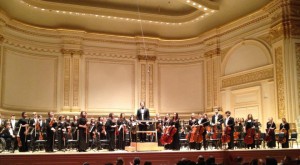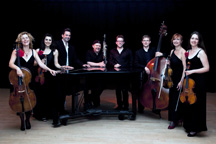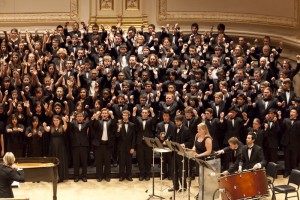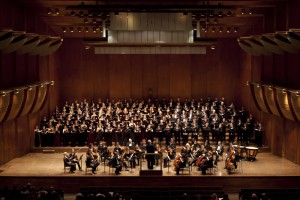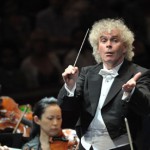The Los Angeles Youth Orchestra arrived at Carnegie Hall and performed with great passion and dedication. They not only arrived at Carnegie, but as an organization and youth orchestra, they have truly “arrived’. The obvious reason for this event was to give these young players a remarkable opportunity to perform in New York, in one of the great halls of the world. But the other purpose was to show that this organization will be a permanent mainstay in their own community. Clearly, they will be just that.
The students’ training, which involves mentoring with members of major orchestras and rehearsing with professional musicians on a weekly basis, is paying off. The orchestra includes between 80 and 90 students ranging in age from 8-18, from both public and private schools. Although a good percentage of its students do not pursue music as a profession, all of the students’ lives are greatly enhanced through the classics and new music, and they learn life lessons through the program—including giving to and feeling a sense of community, the benefits of teamwork, plus knowledge of history and the arts. Some of their alumni, like violinist Niv Ashkenazi and flutist Elizabeth Erenberg, have decided to enter the music profession, and they joined current members for this Carnegie performance. Ashkenazi joined the orchestra originally as a teenager with the dream of becoming a concert violinist and studying at Juilliard with Itzhak Perlman, and he has fulfilled both those goals. Erenberg is now a successful flutist who recently received her master’s degree from The New England Conservatory, studying with Paula Robison.
The program was dedicated to the memory of the orchestra’s late program director and viola coach, Eve Cohen. In addition, one of the premieres, “EveStar”, by Russell Steinberg, was composed in her honor. Cohen worked with Steinberg to help develop the future of the organization and also to convince violinists to make the relatively seamless switch to the richer, more velvety sound of the viola. The music appropriately concludes with the viola section sustaining a low G string note while violins shimmer and sparkle above–as if to say she has said goodbye but will always remain with the orchestra in spirit. The work is structured so that its sprightly middle section provides a welcome energetic contrast (kids like upbeat tempos)—as if to bask in the many happy memories Cohen provided. This section gives the work real variety, and therefore provides conductors with the opportunity to program a contrasting work that’s both dreamy and animated. No doubt, it is the kind of inspired, catchy piece that deserves many performances. The same can be said for Steinberg’s “Carnegie Overture”, which is naturally celebratory–containing freshly lyrical passages that invite warm feelings–but also pulsating with edgy syncopations and dissonance. The percussion section helps drive the work, which has a real sense of continuity and organic growth from beginning to end. The orchestra played both works with a sense of nostalgia and purpose, with focus and infectious energy. They were well-prepared, performing with rhythmical precision and tonal refinement.
Also on the program was music from Beethoven’s challenging eighth symphony and a welcome, playable William Ryden/ Stephen L. Rosenhaus arrangement of De Falla’s music: a combination of the Miller’s Dance from “The Three Cornered Hat” and the Ritual Fire Dance from “El Amor Brujo”. Steinberg exudes much joy in his conducting, and the players respond with affection and exuberance in return. His interpretations of the Beethoven and De Falla were first rate. I cannot mention everyone here, but the horn and percussion sections were particularly excellent throughout the program, with special kudos to the solo clarinet and solo bassoon players.
Carnegie Hall was packed with a nearly full house, and there was excitement in the air. The Los Angeles Youth Orchestra staff, board and generous supporters are making this orchestra a vital part of the Los Angeles community, and it was wonderful for them and the New York audience that they made such an auspicious Carnegie Hall debut. Russell Steinberg has greatly helped with building this orchestra into an invaluable treasure; a shining and everlasting star.

